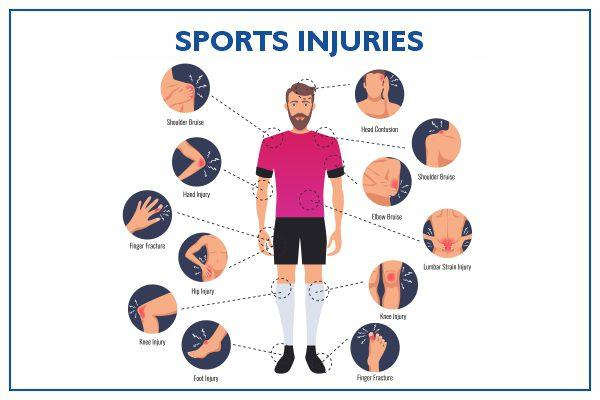As the new school year kicks off and student athletes return to practice and competition, concerns about sports-related injuries are once again in the spotlight. With millions of children and teenagers participating in school sports nationwide, experts emphasize the importance of prevention strategies to ensure both safety and peak performance. This article explores key measures schools, coaches, parents, and athletes can take to minimize the risk of injuries, promoting healthier, happier lives on and off the field.
Essential Warm-Up Techniques to Reduce Injury Risk
Warming up before any sports activity primes the body for optimal performance and dramatically lowers the chance of injury. Experts emphasize incorporating dynamic stretches, which involve controlled movements that increase blood flow and enhance muscle elasticity. Examples include leg swings, arm circles, and light jogging. These techniques not only prepare your muscles and joints but also engage the nervous system for quicker reaction times during play. A proper warm-up usually lasts between 10 to 15 minutes and should progressively intensify to mimic the demands of the upcoming sport.
Beyond dynamic stretching, integrating sport-specific drills can further reduce injury risk by targeting the exact muscles and movements athletes will use. For example, a soccer player may practice short sprints and directional changes, while a basketball player might focus on lateral shuffles and jump preparation. Below is a quick reference table summarizing effective warm-up components and their benefits:
| Warm-Up Component | Purpose | Example |
|---|---|---|
| Dynamic Stretching | Increase flexibility and blood flow | Leg swings, arm circles |
| Light Cardiovascular Activity | Raise heart rate and core temperature | Jogging, skipping |
| Sport-Specific Drills | Prepare muscles for particular movements | Sprints, lateral shuffles |
Choosing the Right Equipment for Safe Play
Ensuring children’s safety on the field starts with selecting equipment that fits their specific needs and sports requirements. Ill-fitting or outdated gear not only hampers performance but significantly raises the risk of injury. Coaches, parents, and athletes must prioritize quality and proper sizing, paying close attention to helmets, mouthguards, shin guards, and padding. Regularly inspecting equipment for wear and tear is also critical, as compromised protection can quickly lead to accidents.
Key factors to consider when choosing sports equipment include:
- Certification: Verify that all gear meets recognized safety standards relevant to the sport.
- Material durability: Opt for equipment made from resilient, impact-absorbing materials.
- Custom fit: Adjustable features or custom-molded pieces ensure optimal comfort and protection.
- Age and weight specifications: Equipment should align with the athlete’s developmental stage to prevent overexertion and injuries.
| Sport | Essential Equipment | Key Safety Feature |
|---|---|---|
| Football | Helmet, Shoulder Pads | Shock Absorption |
| Soccer | Shin Guards, Cleats | Impact Resistance |
| Basketball | Knee Pads, Ankle Braces | Joint Support |
| Baseball | Batting Helmet, Gloves | Head Protection |
The Role of Nutrition in Athletic Injury Prevention
Proper nutrition serves as a powerful ally in minimizing the risk of sports-related injuries among student athletes. A diet rich in essential nutrients such as calcium, vitamin D, and protein strengthens bones and muscles, enhancing durability and recovery. Hydration also plays a critical role, helping maintain flexibility and joint lubrication, which can prevent strains and sprains. Incorporating nutrient-dense foods like leafy greens, nuts, lean meats, and dairy into daily meals supports tissue repair and reduces inflammation caused by strenuous activity.
Coaches and parents should emphasize the importance of balanced meals and smart snacking choices that supply sustained energy, especially on game and practice days. Key dietary components include:
- Complex carbohydrates for long-lasting fuel
- Omega-3 fatty acids to combat inflammation
- Electrolytes such as potassium and magnesium for muscle function
Below is a quick reference table outlining foods that contribute most effectively to injury prevention:
| Nutrient | Top Food Sources | Athletic Benefit |
|---|---|---|
| Calcium | Yogurt, kale, almonds | Bone strength and density |
| Protein | Chicken, eggs, beans | Muscle repair and growth |
| Vitamin D | ||
| Vitamin D | Fatty fish, fortified milk, eggs | Enhances calcium absorption and bone health |
| Omega-3 Fatty Acids | Salmon, walnuts, flaxseed | Reduces inflammation and supports joint health |
| Potassium | Bananas, sweet potatoes, spinach | Maintains muscle function and prevents cramps |
| Magnesium | Nuts, seeds, whole grains | Supports muscle relaxation and energy production |
| Symptom | Possible Issue | Action |
|---|---|---|
| Persistent joint pain | Ligament strain or tear | Rest and professional evaluation |
| Swelling with warmth | Inflammation or sprain | Ice and medical consultation |
| Muscle weakness | Overuse injury | Reduce activity and rehab |
| Tingling sensations | Nerve irritation | Immediate medical review |
To Wrap It Up
As the school year gets underway, prioritizing injury prevention is essential for young athletes striving to stay healthy and active. By adopting proper training techniques, utilizing appropriate protective gear, and fostering open communication between coaches, parents, and students, communities can significantly reduce the risk of sports-related injuries. Staying informed and proactive not only safeguards physical well-being but also ensures that students can enjoy the full benefits of their athletic endeavors throughout the year.





